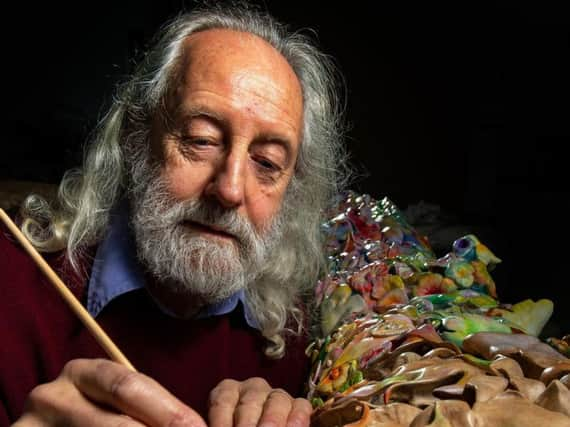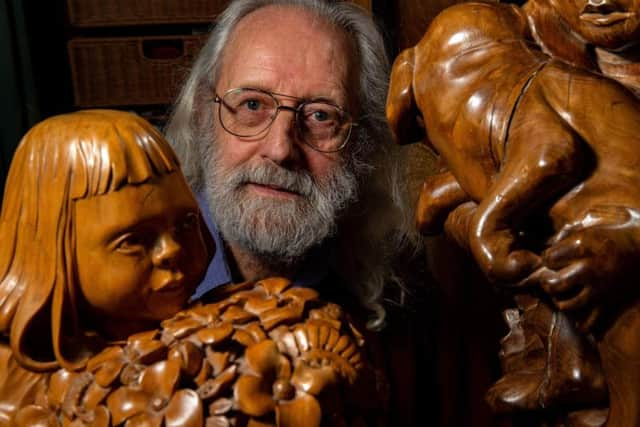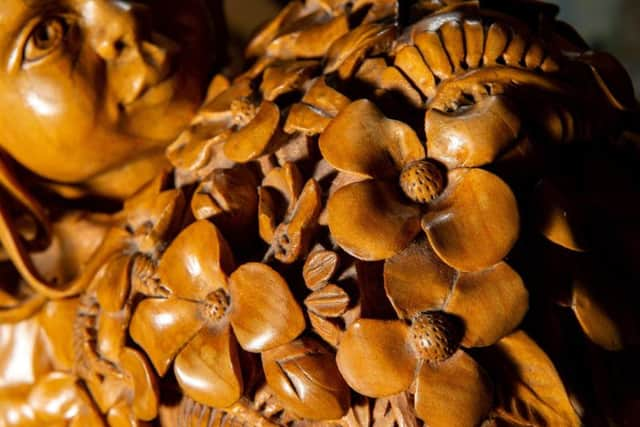Buddy Brook - the Yorkshire artist carving sustainable works out of wood


From his self-built studio in the garden of his house in Baildon, Buddy Brook makes the most intricate and finely detailed wooden carvings out of pieces of wood that he has collected from his garden and elsewhere. Ranging from small-scale figurative models to large-scale abstract works, he has created a sculptural body of work to add to his oil paintings – mostly portraits – pastels, illustrations and watercolour landscapes.
The 71-year-old Bradford-born artist joined the city’s art school in 1962 just five years after the college’s most famous alumni, David Hockney, and graduated four years later with a first class degree in Printed Textile Design. Brook, whose first name is actually Alan (“I got called Buddy by friends at school because I looked like Buddy Holly and it just sort of stuck”), was one of Bradford Art College’s youngest students, beginning his course at the age of just 14.
Advertisement
Hide AdAdvertisement
Hide AdHepworth Wakefield to display three works gifted to nation including one by namesake Barbara Hepworth“In those days the minimum age was 15 but the powers that be allowed me in because of where my birthday fell and they didn’t want me to start halfway through a term,” he says. “I wanted to go on to the Fine Arts course but because I didn’t have any ‘O’ or ‘A’ levels I wasn’t allowed to, I don’t know why. So they said the best thing for me to do was to go on the printing and textile course.” He thoroughly enjoyed being at art college and certainly made the most of his time there.


“I thought it was fantastic,” he says. “I worked 9am to 9pm Monday to Thursday and then on Fridays I had to go home at 5.30pm, because that’s when they closed the studios. I loved every minute of it. I didn’t find it any kind of work. There was a young head of department at the time and he was great. What was nice was that we always had three or four teachers at any one time teaching us and then we also got people who were successful in their own field coming up and doing three-week courses for us.”
Brook’s interest in art began at an early age. “None of my family members were artists,” he says. “My dad was quite a good draughtsman – he was in the Navy in the Fleet Air Arm – and I was always drawing something; as a child, I enjoyed being on my own and I used to copy characters out of the comics that I read.”
When Hockney met Davie in Wakefield – Recreating a ‘great moment in British art’After leaving college at the age of 18, Brook started work in the building trade – “I was on the concreting gang that worked on the Harrogate Convention Centre” – while still trying to keep his art going. “I was always doing bits of artwork for people – portraits and things, people would ask me to do stuff, so I kept my hand in doing drawings, paintings and pastels.” Having met and married his first wife and with a young family to provide for, Brook eventually took a position with the Gas Board. “I had to have a steady income,” he says. “When I got my first job I thought ‘it will tide me over until somebody comes along and discovers me as an artist’ but that never happened unfortunately.” After working for the Gas Board for many years he retired in 2008 and could finally focus fully on his art. “The passion never went away and since my retirement and building my own studio I have been able to do a lot more.”
Advertisement
Hide AdAdvertisement
Hide AdIt was at this point that he began to experiment with wood carving – it is not something he studied at college, he is entirely self-taught.


One of his first large-scale pieces Together At Last featured in the Bradford Open exhibition at Cartwright Hall in 2017. It is a stunning piece of delicately wrought carving – featuring flower-heads, leaves, and fruits – created out of a large piece of sycamore. The arrival of the wood was quite serendipitous – it fell off a large tree onto the driveway at his house while he and his wife Anita were away on holiday in the summer of 2015. Upon their return, Brook started to carve the wood to create the artwork which took him two and a half years to complete.
Mystery over how nude female painting by Beverley artist Fred Elwell was torn in two“I have always done a few small bits of work in wood here and there and I found it quite relaxing, although it can be quite hard work at times. If I could I would be in the studio for most of the day. When I am working on some of these bigger projects I can feel like I am not thinking about anything else at all.” Two years is the average length of time it takes Brook to make these sculptures – and it is not surprising when you see the level of detail and care that goes into their creation. The range of tools in his studio – from large chisels to the finest, pencil thin files – is testament to Brook’s artistic imagination and versatility.
“I have a basic idea in my head and then I just start and let it develop, it comes organically as I go along,” he says. “I never change the original shape of the piece of wood – it sort of talks to you to a degree – and I like the work to show that you can make something really nice out of a quite ordinary piece of wood. I am ambidextrous which is handy because I often have to do quite complicated manoeuvres to get inside to work on the hollowed out bit.”
For more information about Buddy Brook and his work visit www.buddybrook.weebly.com